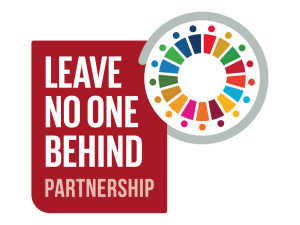13 October 2020
A shocking increase in violence against women and girls has been reported in many countries during the COVID-19 pandemic, amounting to what UN Women calls a “shadow pandemic.”
The jarring facts are:
- Globally 243 million women and girls have been subjected to sexual and/or physical violence by an intimate partner in the past 12 months.
- The UNFPA estimates that the pandemic will cause a one-third reduction in progress towards ending gender-based violence by 2030;
- UNFPA predicts an additional 15 million cases of gender-based violence for every three months of lockdown.
- Official data captures only a fraction of the true prevalence and nature of gender-based violence.
The response to these new challenges were discussed at a meeting in July with a community-led response delivered through local actors highlighted as key. This means that timely, disaggregated, community-level data on the nature and prevalence of gender-based violence has never been more important. Data collected within communities can play a vital role to fill the gaps and ensure that data-informed policies reflect the lived experiences of the most marginalized women and girls.
Community Scorecards: Example from Nepal
Collecting and using community-level data can be challenging, particularly under the restrictions of the pandemic. Working in partnerships is therefore vital if we are to respond quickly and flexibly to new and old challenges.
A great example of this is the Leave No One Behind Partnership, which responds to these challenges while delivering on crucial data and evidence at the community level. This important partnership brings together international civil society organizations with national NGOs, civic platforms and community-based organizations to monitor progress towards the SDGs.
National coalitions use community-driven data to fill knowledge gaps at local levels, understand local drivers of vulnerability and marginalization, and give voice and agency to the groups who are most likely to be left behind. DI joined the partnership this year to provide technical guidance supporting the harmonization and visualization of data that has and will be collected. The national coalition in Nepal has been working in partnership with Local Women’s Major Groups, using community scorecards to lead citizens and service providers in a participatory process to monitor the elimination of all violence against women and girls in their local area.
The community scorecard approach focuses on mutual dialogue between users and service providers and generates information through focus groups interactions that aim for maximum participation of the local community. Before the pandemic hit, the use of the community scorecard through public health service providers was already resulting in productive dialogues with local decision makers on gender-responsive planning and policies. Service providers and citizens developed a set of locally relevant targets together which now form a basis for accountability. The community-driven data filled an important knowledge gap at the local municipality and ward levels, looking beyond the national-level gender equality data to highlight local areas that needed targeted support to implement practical and policy level interventions to combat gender-based violence.
Community-driven data revealed that few public agencies were meeting national targets to prevent discrimination, by either failing to enact or delaying local laws. Aggregate data from scorecards identified local areas where child marriage rates were still high and revealed that local officials were taking limited action to prevent harmful practices.
As well as providing vital complimentary data, the partnership has enabled local citizens to have a direct dialogue with community leaders and service providers on the changes that are needed to address gender-based violence. Local-level, gender-responsive recommendations included social protection provisions for women; municipality level budget systems and local level programs that target harmful norms such and menstrual taboos and child marriage.
Collecting Data in a New Normal
While COVID-19 has highlighted the need for local, community-driven data, public health restrictions have also made it more challenging to collect such data. For example the usual focus group approach to creating a community scorecard is no longer possible.
The coalition in Nepal therefore faces an increased demand for community-driven data while needing to develop a “new normal for data collection.”. Partners must: make data collection more targeted; consider how data on gender-based violence are included in secondary sources; and map online resources and other forms of data collection.
Addressing these new challenges may include using more blended collection approaches such as mobile phones or web-based platforms. However, while these may help to facilitate data collection, they come with increased privacy and safeguarding risks that have to be carefully considered to ensure that participants, particularly women and girls, are not at increased risk of violence or have their privacy and confidentiality exposed.
Statisticians within national statistics offices are facing these very same challenges. The new normal for data collection highlights a need for partnerships between both official and unofficial data organizations with the understanding that so much can be learned by sharing the principles and experiences of collecting robust, valuable, and high-quality data. Community-driven data initiatives have already proved the value that unofficial data can bring to the policy debate by contributing to the variety of national data and ensuring that those who are most left behind are counted.
The virtual 2020 UN World Data Forum offers a unique opportunity for the community of data users and producers to develop these partnerships and to deliver the information and evidence we need to ensure that no one is left behind.
This article will be cross-posted at the global SDG Knowledge Hub of IISD as part of a series of publications from the Leave No One Behind partnership.









